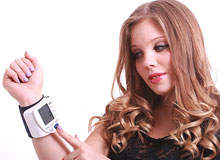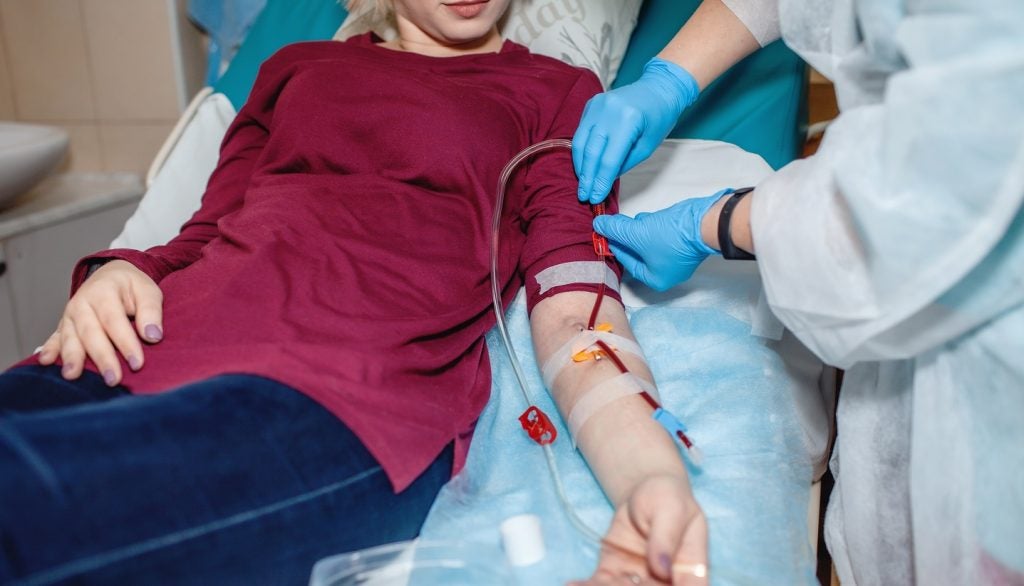
You don’t have to be a surgeon to recognise the benefits that remote monitoring can bring to patients. With the help of mobile electronic devices, the elderly, disabled and those with chronic illnesses such as heart disease and hypertension can be cared for in the comfort of their own home.
The advent of new and exciting technologies means that patients can measure their own blood pressure, sugar levels, heart rate and temperature before sending this data to be analysed from a distant location. But the lack of financial incentives to invest in such tools has somewhat curbed the enthusiasm of healthcare providers – dampening market potential around the world.
Financial setbacks
The problem is that there are limited options available to reimburse healthcare providers for the cost of offering services such as video consultations and remote data analysis. And according to a report by business research and consulting firm Frost & Sullivan, which looked at the European remote patient monitoring market, this issue will pose a major challenge to companies wishing to boost their unit sales and market revenues.
In a statement, senior research analyst Janani Narasimhan explains: “Deficient data pertinent to funding and reimbursement practices deters several potential users from adopting remote monitoring systems.”
Funding is also an issue in the US, according to Gregg Malkary, the managing director of Spyglass Consulting, a market intelligence firm and consultancy focused on information technology and healthcare. “If you are dependent on reimbursement from the commercial payers, including Medicare and Medicaid, you have no incentive at all to make any investment in these tools,” he says.
See Also:
The issue of reimbursement remains a barrier; however, remote monitoring doesn’t come without its cost benefits. And, as more hospitals focus on positive patient outcomes, investing in telecare solutions may no longer be an expense but a price to pay to improve business strategies.
How well do you really know your competitors?
Access the most comprehensive Company Profiles on the market, powered by GlobalData. Save hours of research. Gain competitive edge.

Thank you!
Your download email will arrive shortly
Not ready to buy yet? Download a free sample
We are confident about the unique quality of our Company Profiles. However, we want you to make the most beneficial decision for your business, so we offer a free sample that you can download by submitting the below form
By GlobalDataTechnology
Telecare solutions enable patients to avoid institutional care for longer, reduce hospital visits for routine examinations and identify exasperations before they turn into crises.
One such solution is Honeywell HomMed’s Lifestream platform, which offers web-enabled access to disease-specific symptom management. It integrates with the Genesis DM telehealth monitor, which is placed in a person’s home and records vital signs of a patient’s changing condition. This data is then reviewed by healthcare professionals to determine the priority of patients’ treatments. Patients don’t always have to be at home to use these devices; increasingly, suppliers are rolling out telecare technologies that can be used no matter where the patient is.
Toumaz, a UK-based provider of low power wireless technologies, offers Sensium devices. These have recently been used to monitor the health status of a team of explorerers involved in an expedition across the Antartic.
The small, low-power and unobtrusive systems were worn next to the body to record heart rate, temperature and physical activity. The data from gathered was then transmitted to a laptop in one of the science vehicles in the expedition. When out of range of the laptop receiver, the devices were able to store data locally.
Ganesh Kathiresan, head of healthcare for Toumaz, which also offers home-based applications, says that there are many reasons why hospitals should deploy such services. “Doctors can follow up with patients when they are at home and only the more serious patients are invited to the hospital,” he explains. “This ensures the patients with serious conditions are treated sooner.”
Mickael Viot, medical segment lead for Europe, the Middle East and Africa at Freescale, which designs electronic components such as microprocessors, radios and sensors for medical device manufacturers to use in telehealth solutions, seconds that argument. “The number of hospitals and hospital rooms is far from enough in almost every country,” he says. “Moreover, the general cost of healthcare expenditure is rising rapidly, and every country is looking for ways to reduce this cost. To allow the hospitals to reduce the increasing demand for rooms, staff and equipments, remote monitoring appears to be very good option.”
Malkary warns that physicians and nurses were not trained for this kind of care model, however. “It starts back in medical school,” he says. “So if you’ve been out there 20 years, why would you want to change what’s worked for you in the past?”
But Viot argues that remote monitoring allows physicians to reduce the length of post-surgery stays, meaning their patients can go home earlier. “The patient usually requires simple vital signs monitoring which can be easily achieved at home thanks to the size reduction of the equipments and the fact they can now be monitored from a distance,” he explains.
Access and safety concerns
The majority of patients who need to use remote monitoring devices are those that may not be able to leave their home because of their condition. The key question is then: how accessible are telecare solutions and devices to people in poor health?
Kathiresan admits that many elderly users find the latest technology more difficult to use – especially when there is a need to pair devices with Bluetooth and computers – but insists that all Sensium devices from Toumaz have an uncomplicated design. “Devices are automatically configured from the network, thus users just need to turn the devices on and let the rest take care of itself,” he says. “Caregivers will also be able to change parameters and adjust the operation of the devices remotely.”
The biggest concern for most patients is the safety and accuracy of self diagnosis compared to being diagnosed in hospital.
However, to be commercialised, all medical devices sold directly to end users undergo inspection from authorities such as the US Food and Drug Administration and European directives, who certify products that meet the apprppiate provisions.
Further, any self diagnosis will always be confirmed by trained healthcare professionals, thus it can be helpful as an early form of triage to bring patients who are at risk to the caregivers’ attention.
Uncertain future
The future of the telecare industry depends on funding from private insurances and governments, many of whom have, so far, shown little interest in the area.
When asked if doctors will have the time to analyse data and conduct video consultations, Malkary said it would depend on hard cash: “If they get reimbursed they will, but is the reimbursement equivalent to the office visit?
“In the US, a lot of times the doctor will tell a patient to come and visit them at the weekend so they will get paid. I’ve heard this out of their mouths – they have freely admitted it to me.”
However, the Department of Health in the UK has started to tap into the market. In 2010, it made £162m available to local health and care services to spend on home support, telecare and rehabilitation services in the 2010/11 financial year.
Many health authorities and providers say that positive patient outcomes are their main priority. And, if this is true, it may be time to put their money where their mouths are.




